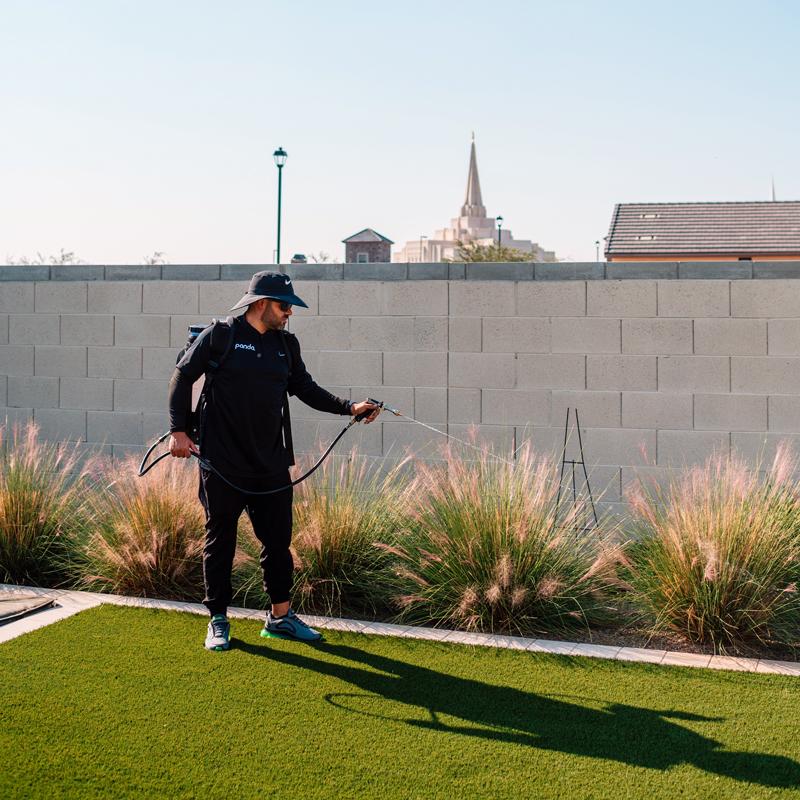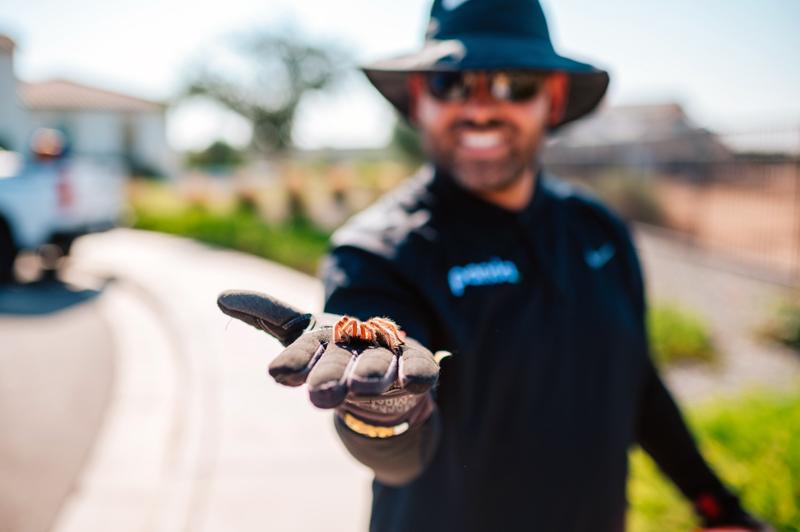Weather patterns directly influence when and where pests appear, how quickly they reproduce, and how actively they search for food and shelter.
Pest proofing your home means knowing what to do against the right types of pests that are most likely to infest your property.
Spring
As winter gives way to spring in Arizona, dormant pests become active again. Warmer temperatures accelerate the metabolism and reproduction rates of nearly all insect species, including invasive pests.
Ant colonies, relatively quiet during winter months, expand rapidly in spring. Fire ants become particularly active, with queens laying thousands of eggs as soil temperatures rise. A single fire ant colony can grow from a few thousand members to over 100,000 within three years, with spring being their primary growth season.
Spring rains create ideal breeding conditions for mosquitoes. These pests need standing water to complete their life cycle, and spring showers provide ample opportunities in flowerpots, pool covers, and other water-collecting items around homes.
Earwigs also thrive during springtime moisture. Their reproduction cycle peaks during spring, with females laying 30-50 eggs in moist soil underneath plants or mulch. The ring-legged earwig species breeds from March through September, with spring being their first reproductive surge of the year.
Summer
Summer in Arizona brings both extreme heat and monsoon moisture. Scorpions reach peak activity during hot summer nights. The Arizona bark scorpion, noted as the most venomous scorpion in North America, becomes particularly mobile during summer evenings. They can climb walls and trees searching for prey, making summer months critical for scorpion control. The giant hairy scorpion and yellow ground scorpion also show increased hunting behavior during warm summer nights.
Mosquitoes continue breeding throughout summer, with populations spiking after monsoon storms. Arizona is home to over 40 species of mosquitoes, many of which thrive during summer’s combination of heat and periodic heavy rainfall.
Crazy ants move more erratically and cover greater distances during summer heat. They establish multiple queens and satellite colonies during warm months, making summer the most challenging season for controlling their spread. Their activity increases dramatically when temperatures consistently stay above 75°F.
Fall
As temperatures begin to cool in fall, pest behavior shifts from reproduction to seeking winter shelter.
Rodents actively search for winter homes in autumn. Roof rats, woodrats, and house mice all increase their efforts to find indoor shelter as outdoor temperatures drop. A single female house mouse can produce up to 14 litters per year, with fall being a key time for them to establish indoor nesting sites before winter.
Carpenter ants, which can damage wooden structures, scout for winter nesting locations during fall. They prefer water-damaged wood, often entering homes through trees touching rooflines or gaps around utility lines. Their activity may seem reduced, but they’re actually focusing on establishing winter colonies rather than foraging widely.
Pavement ants similarly prepare for winter by finding entry points around foundations, sidewalks, and driveways. These ants, which build nests along concrete edges, work throughout fall to secure food sources and nesting sites that will sustain them through colder months.
Winter
While outdoor pest activity generally decreases during winter, indoor infestations often increase as pests seek warmth and shelter.
Silverfish become more noticeable in homes during winter months. These paper and fabric-damaging pests thrive in the stable indoor environment winter provides. The common silverfish (Lepisma saccharina) remains active year-round indoors but becomes more visible in winter as they venture into living spaces seeking food when outdoor options diminish.
Odorous house ants frequently invade homes during winter, drawn to consistent indoor temperatures and food availability. These ants emit a distinctive rotten coconut smell when crushed and actively establish indoor colonies during colder months. Winter infestations often center around kitchens, bathrooms, and other areas with food and moisture.
Earwigs, despite preferring outdoor environments, may seek indoor shelter during winter cold snaps. The European earwig species, in particula,r moves indoors during winter, hiding in wall voids and basements until warmer weather returns. While less active during cold periods, they still damage indoor plants and paper products throughout winter months.
Extreme Weather Events
Unusual weather events can disrupt normal seasonal patterns and trigger unexpected pest behavior.
Flash flooding drives scorpions and other ground-dwelling pests into homes seeking dry shelter. The inland floodwater mosquito specifically evolved to take advantage of temporary water pools created by heavy rains.. Silverfish, earwigs, and certain ant species increase home invasions during drought as they search for water sources. The ring-legged earwig species in particular moves indoors during extended dry spells, contrary to their normal outdoor preferences.
Unseasonably warm winters stop pests from being dormant. Mosquitoes that would typically become inactive during cold months continue breeding during mild winters. Rodent reproduction cycles that normally slow in winter continue uninterrupted during warm winters, leading to larger spring populations.
Final Thoughts
Weather patterns provide reliable indicators of upcoming pest activity. Monitoring local conditions helps predict changes in typical seasonal patterns so you can adjust your prevention schedule accordingly.
While each season brings different pest challenges, maintaining consistent prevention habits across all seasons with the help of a pest expert creates the most effective protection for your home and family.



